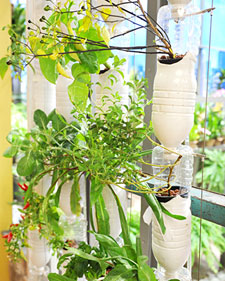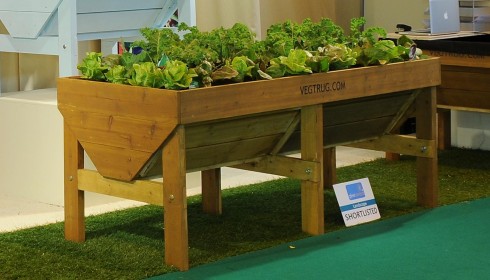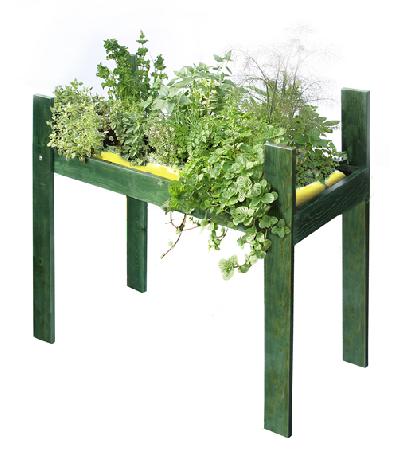 Image: Martha Stewart website.
Image: Martha Stewart website.
Window Farms is a term used to describe hydroponic growing systems (made from recycled materials) that are sited within a buiding’s windows.
A type of living wall – except that its a living window.
The farms were developed as a technique to allow city folk who lived in small spaces the ability to grow and eat their own food.
An interesting idea but I would never give up views or prevent light streaming into my living room just so I could grow some veggies. Designing a vertical gardening system to sit in an apartment window seems odd to me .
If I can not afford a house with a garden I am highley unlikely to have a house with loads of windows. And if I only have a few windows I would be very very reluctant to loose any of those windows to vegetation – no matter how organic the vegetation may be.
Placing an object in front of a window needs very careful consideration. Evenmore so where space is limited.
Windows are about views and light. Windows can assist in creating an illusion of space – borrowing outdoor views is a great design trick if space is limited.
Surely the most depressing interior arrangement is to block windows?
Can these farms sit perpendicular to the window? If the vegetables need more light than the adjacent wall can provide perhaps just a row of plants on the windowsill may be a good compromise?
This enviornmental design solution seems to be solving one issue whilst creating a few other problems.
I support this type of thinking – its great. But the solution may need some design tweeks. Thankfully the designers are into crowd sourcing – For further details on this project check out http://www.windowfarms.org/







